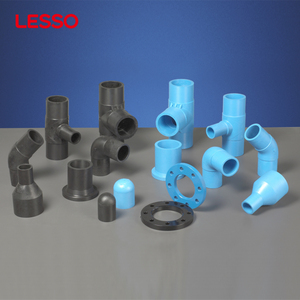Introduction to PE Pipe End Cap
The PE pipe end cap is a vital component used in various piping systems to effectively seal the ends of polyethylene pipes. This essential accessory plays a critical role in ensuring the integrity and longevity of piping networks, whether in industrial, agricultural, or residential applications. Designed to withstand high pressure and prevent leaks, PE pipe end caps are made from high-quality polyethylene, providing excellent durability and resistance to environmental factors.
Types of PE Pipe End Caps
PE pipe end caps come in several types, each designed to cater to different applications and specifications:
- Standard PE Pipe End Cap: The most commonly used type, ideal for general-purpose sealing.
- Threaded PE Pipe End Cap: Features internal threads for easy connection to threaded pipes, enhancing versatility.
- Flanged PE Pipe End Cap: Designed with a flange for robust connections in high-pressure applications.
- Electrofusion End Cap: Utilizes electrofusion technology for a seamless and strong bond during installation, ideal for complex systems.
Applications of PE Pipe End Cap
PE pipe end caps are widely used across various sectors, showcasing their versatility and reliability:
- Water Supply Systems: Essential for sealing off pipelines in municipal waterworks.
- Gas Distribution: Used in gas pipelines to secure and close off sections safely.
- Agricultural Irrigation: Helps in maintaining water pressure in irrigation systems by capping unused pipe ends.
- Industrial Processing: Employed to protect fluid flow in manufacturing and processing operations.
Features and Advantages of PE Pipe End Cap
The superior features of PE pipe end caps make them an excellent choice for a wide range of applications:
- Durable Material: Made from high-density polyethylene, offering remarkable resistance to chemicals and corrosion.
- Temperature Resilience: Can withstand a wide range of temperatures without becoming brittle.
- Leak Prevention: Designed to provide a tight seal, preventing leaks and ensuring the safety of the contained fluids.
- Ease of Installation: Quick and easy to install, reducing labor costs and time on projects.
- Cost-Effective: Affordable and efficient for maintaining pipeline systems, ultimately saving on long-term maintenance costs.


















































































































































